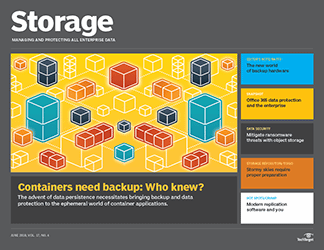PRO+ Premium Content/Storage
Access your Pro+ Content below.
Disaster avoidance requirements ensure business continuity

This article is part of the Storage issue of June 2018, Vol. 17, No. 4
We've seen the early predictions about the 2018 Atlantic hurricane season. Global Weather Oscillations, citing the "strongest cycle in 70 years," is projecting 18 storms with six making landfall in the United States and three or four classified as major storms rated Category 3.5 or higher. Scientists and climatologists blame hotter ocean temperatures for the increasing number and severity of these weather events, and this year's Atlantic currents are running hot. These storms are a big concern for businesses and homeowners living along the Atlantic and Gulf of Mexico coasts. But that's only a fraction of the land mass and the population of this country. The Midwest may face a much lower hurricane threat, for example, but it isn't in the clear when it comes to weather-related catastrophes, such as tornados. Whatever the location and threat, disaster avoidance has become top of mind for everyone. Chris Hood, IT director at First Enterprise Bank, a four-branch community bank in Oklahoma City, Okla., recalls how he took his position...
Features in this issue
-
Container backup follows data persistence to these ephemeral apps
The advent of data persistence in containers necessitates having data backup in containers. Here's how this is being done and which vendors are leading the way.
-
Office 365 data protection, the enterprise and you
Gain a better understanding of Microsoft Office 365 security and storage management features and how the popular cloud-based productivity and collaboration suite really works.
Columns in this issue
-
What's new with data protection systems? Everything
The next backup hardware you purchase will likely come with integrated backup software. That changes the buying dynamic and complicates the decision-making process.
-
Disaster avoidance requirements ensure business continuity
Include disaster recovery and avoidance requirements as design goals when creating storage and production environments to ensure business continuity during weather events.
